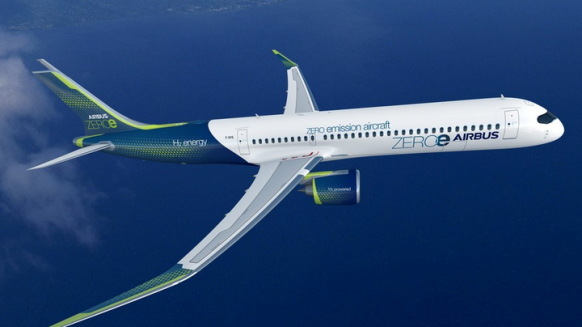
Not one to stand still for long, Airbus, has been making good use of their time in isolation during COVID19. Most recently, this week Airbus has released concepts of three aircraft which it claims to be both zero-emission and commercial. Airbus says these new aircraft could enter service as soon as 2035 with some of the concepts flying even earlier.
Airbus believes the key to the large aircraft’s primary power source is hydrogen, a fuel source which has long been researched and developed by automotive manufacturers such as BMW and Audi. Hydrogen fuel has been proven to have zero waste and certainly no harmful bi-products to the environment such as carbon dioxide.
The concepts have been codenamed the ZEROe range and will be Airbus’ first climate-neutral aircraft range in history, with Airbus claiming that the turbofan design aircraft will have a range of over 2,000 nautical miles (which means it can operate between continents). The designs also include capacities from 120 people through to 200 people.
The second 100-person design is a turboprop design which will also be powered by hydrogen combustion in modified gas-turbine engines. A prospect which looks to combine old technology with new for shorter domestic flight options.
The final option for the company and the most radical has been dubbed a “blended-wing body” design and looks like an aircraft that could be mistaken for science fiction. The wings of the aircraft merge with the main body and are also capable of seating 200 people. The reason Airbus created this concept though was because the large space in the aircraft body allows more options for hydrogen storage potentially meaning more nautical mile range.
“The concepts we unveil today offer the world a glimpse of our ambition to drive a bold vision for the future of zero-emission flight,” Airbus CEO, Guillaume Faury, claimed at the unveiling.
“I strongly believe that the use of hydrogen – both in synthetic fuels and as a primary power source for commercial aircraft – has the potential to significantly reduce aviation’s climate impact.”
Work is also underway from the aircraft designer and manufacturer to work out the finer details of the implementation of hydrogen-fuelled aircraft including fuel logistics and fuelling process prior to the hard launch of a production hydrogen aircraft.
